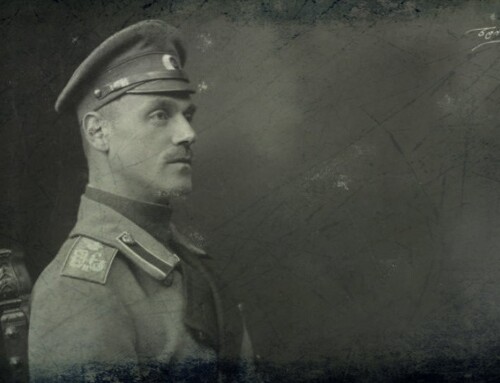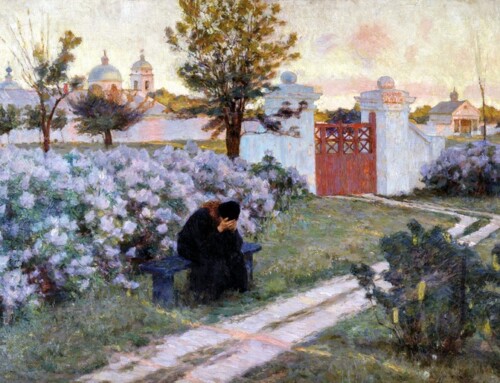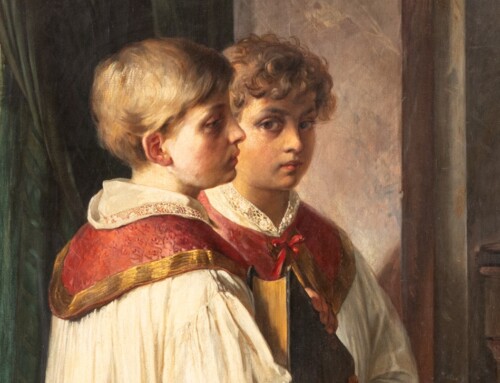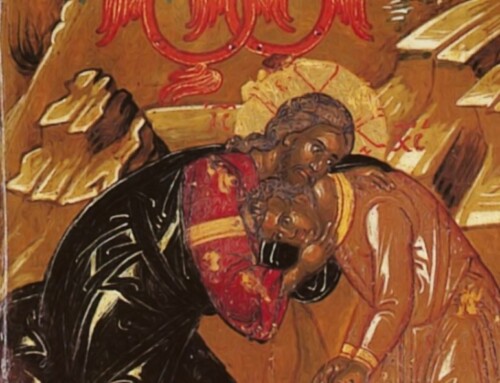I loved 1950s Hollywood musicals as a kid: “Calamity Jane,” “Seven Brides for Seven Brothers,” “Singin’ in the Rain.” When I grew-up, I learned that this proclivity was not unusual among boys who later entered the gay lifestyle. For the most part, I think it had to do with the escapist quality of these films: that despite tribulations and sorrows, every problem was perfectly resolved before the final credits rolled. However, one movie that I always disliked, whenever my parents pushed it into the VCR, was the 1955 version of “Oklahoma!” Despite the happy ending, there was something extremely dark and sinister swirling about the story; and then there was that disturbing dream sequence. As a little child, I couldn’t understand why I was so affected. Later, I got it.
The main story spins around the love triangle involving the three principle characters: Curly, Laurey, and Jud. Curly is a penniless drifting cowboy, Laurey, the niece of a spinster farm owner, and Jud, the moody hired-hand. The first act sets the temper. Curly, who is in love with Laurey, asks her to the upcoming box-lunch social. In a fit of spite, as she attempts to curb the over-eagerness of the somewhat conceited cowboy, Laurey accepts an invitation from Jud; whom she secretly fears. At the same time, another cowboy, Will, the prospective suitor of Laurey’s best-friend, Ado Annie, returns from Kansas City with stories of the wonders he saw, including a burlesque house and the various strippers. Then, he also reveals that he bought a mechanical telescope, concealing a knife, that when peered through shows the photograph of a naked woman. The whole thing is dealt with in jest.
Back at the farm, Laurey confesses to Curly that she made a mistake because she now worries about going to the social with Jud. In an effort to stop Jud from accompanying Laurey, Curly enters Jud’s dingy and dark hovel. Inside, there is a strange and awkward episode of failed male-bonding when Jud shows Curly his collection of pornographic cigarette cards. Jud is unimpressed by Curly, and refuses to acquiesce. Then, in the film’s most horrifying sequence, Laurey dreams of what life would be like married to Curly, but then Jud appears and kills him. Around Jud, are a group of heavily made-up and evil looking dance-hall girls. They are in complete opposition to the wide-eyed and smiling women who danced about Laurey’s room, in their petticoats, while freshening-up on their way to the social. These nightmare women are pornographic menacing harpies. The rest of the dream involves Laurey, played by another actress, running through a surrealistic series of studio-sets. Laurey awakens and realizes that she still has a date with Jud.
On the way to the social, Jud attempts to rape Laurey. But, she able to push him out of the carriage and continue on to the party without him. When she arrives, things are in full swing. And, in the movie’s most taut and dramatic scene: Curly and Jud bid against each other for Laure’s lunch-basket. Curly sells his every possession, and wins. Meanwhile, Will is still trying to woo Ado Annie: who is sort-of a proto-feminist and countrified sexual explorer, who scorns Will’s double-standard of female loyalty and servitude against male dominance and freedom. During the film’s wittiest and best constructed song, “All Er Nuthin,” Ado Annie wins the argument when Will consents to the beneficial reality of mutual monogamy.
At the party, a fuming Jud schemes a way to kill Curly: by buying from Will the porn-telescope with the hidden knife. He fails. In anger, Curly violently confronts Laurey, she fires him, and he disappears. Finally acknowledging that Curly is the type of sensitive, loving, and masculine man that she needs, Laurey runs to him and accepts his proposal. At the wedding, Jud reappears and tries to murder Curly, only, during the ensuing fight, Jud falls on his own knife and dies. During the make-shift trial, Curly is found not guilty. Then he and Laurey ride off into the horizon. It’s a rare moment of relief, in a tension-filled musical that’s anything but light-hearted.
Although, the references to pornography in “Oklahoma!” went completely over my head as a kid. When I later saw the restored version on DVD, many years later, the obvious became clear. For, Jud is a man obsessed with porn. He hides away in his dirt-floored dump of a room, looking at his nudie-cards while peering out the window at the unsuspecting Laurey: the only young female in his line-of-sight. His madness poisons everyone around him. It all brings back the story of Alessando Serenelli, the killer of St. Maria Goretti. As, Serenelli also hoarded these little pictures of naked women before he attempted to rape the Italian adolescent. Masturbating to these images, Jud is a man driven insane: possessed by the demon of violent lust. He can no longer solely live in the world of fantasy. When a traveling peddler tries to sell Jud even more porn-pictures, he indignantly refuses. He needs a real woman. He focuses on Laurey.
In addition to the Curly, Laurey, and Jud story, the Will and Ado Annie sub-plot is worth examining in terms of porn’s impact upon the psyche. Will, who is a footloose bachelor, sees nothing wrong with going to a burlesque-show or purchasing porn. He is being manly. On the other hand, Ado Annie, who has been exploring her own sexuality, is willing to give all that up for the love of a single man. She expects the same from Will. This cuts to the heart of the biological and hormonal differences between men and women: men are restless, a quality which is intensified in the male-only world of promiscuous homosexuality, wandering, and image-based; women are content, witnessed by the extremes of lethargy in the lesbian community, domestic, and fixated on emotions. Ado Annie wants security, a home, and children. While Will doesn’t want anything to curb his unattached style. In marriage, the complementary works: as the bravado of the male is tempered by the female.
Sadly, “Oklahoma!” has been often disregarded as just another frivolous Hollywood musical, when, in reality, it’s a rare exploration of the social and psychological damage caused by pornography. It needs to be reevaluated; seriously studied, and shown to children. Because, as a teaching aid for the youth, the film’s subtlety suits those of an impressionable age; since the message is not overt, or handled salaciously. But, the power is still there. “Oklahoma!” is a classic: not just in the musical genre, but within the history of motion pictures.





